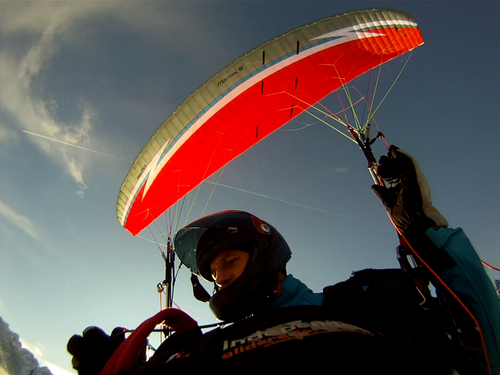Swing Mistral 6.26 |
|||||||||||||||||||||||||||||||||||||||||||||||||||||||||||||||||||||||||||||||||||||||||||||||||||||||||||||||||||


|
|||||||||||||||||||||||||||||||||||||||||||||||||||||||||||||||||||||||||||||||||||||||||||||||||||||||||||||||||||
Instability rating |
|||||||||||||||||||||||||||||||||||||||||||||||||||||||||||||||||||||||||||||||||||||||||||||||||||||||||||||||||||
|
|||||||||||||||||||||||||||||||||||||||||||||||||||||||||||||||||||||||||||||||||||||||||||||||||||||||||||||||||||
Glider characteristics |
|||||||||||||||||||||||||||||||||||||||||||||||||||||||||||||||||||||||||||||||||||||||||||||||||||||||||||||||||||
|
Launch preparations: difficult
launch characteristics: delayed, delayed climb, needs gentle guidance, good feedback during inflation, little braking required, control check simple, low takeoff speed
asymmetric collapse: canopy collapses at low angle to leading edge, en: EinklapperDynamikGering, total course change 90-180°, (1), moderate course change rate, moderate forward pitching 45-60°, (2), high height loss 40-49 m, (3), low sink velocity 10-14 m/s, (1), G-Force < 2,5 G, (1)
Frontal collapse: moderate pitch backwards 30-45°, low pitch forwards <30°, moderate dynamics, course change <90°, (2), delayed recovery, usually symmetric recovery, delayed return to normal airspeed, short deep stall phase, very high height loss >50 m, (4), low sink velocity 10-14 m/s, (1)
Spiral dives: very rapid sink velocity increase, extremely high G-Force > 5,0 G, (5), Sink velocity after 720° < 22 m/s, (4), Extremely high maximum sink velocity >25 m/s, (5), sink velocity increase < 10 m/s on brake release, (4), Stable spiral dive, (5), Very high height loss during recovery >100 m, (4)
B-Stall: normal force required, moderate pitch backwards 15-30°, low pitch forwards <15°, stable sink phase, no tendency to deform, immediate return to normal airspeed, 6-8 m/s, height loss on recovery 20-40 m
big ears: simple initiation, stable flight phase, wingtips flatter a little, delayed automatic recovery, Vsink unaccelerated 2,5-3 m/s, Vsink accelerated 3,5-4 m/s, Vunaccelerated 3-5 km/h less than trimspeed, Vaccelerated >8 km/h faster than trimspeed |
|||||||||||||||||||||||||||||||||||||||||||||||||||||||||||||||||||||||||||||||||||||||||||||||||||||||||||||||||||
Notes |
|||||||||||||||||||||||||||||||||||||||||||||||||||||||||||||||||||||||||||||||||||||||||||||||||||||||||||||||||||
|
Launch preparations: We began our test series where all flights begin, with launch preparations. Ergonomic considerations where the machine (paraglider) should fit perfectly to the user (pilot) for a particular use (launching) quickly revealed large differences between the different models. Life can be simple, very simple, as revealed by the Skywalk Mescal3, Nova Prion and Paratech P12. These gliders have just a few solid lines organized in an easily understandable scheme together with soft upper gallery lines which don't tend to tangle with each other and clearly coloured and separated risers. Line checks are quickly made with a few gentle pulls and glances. On gliders where thin, unsheathed gallery lines are present (Nova Mentor 2, Swing Mistral 6, Ozone Rush 3, Gradient Golden 3, Skywalk Chili 2, Nova Ion Light) line checks become increasingly demanding. “Dental floss” lines not only require more optical attention, but also tend to tangle or get caught up in small obstacles more readily. Most demanding in this respect was the Ozone Rush 3, here unsheathed lines are present in the upper and middle galleries. Several unsheathed lines are also attached to the stabiliser and require careful checking for tangling before launching. In addition, the aramid lines used are relatively stiff and have a tendency to form loops and tangle with each other. Asymmetric Collapses: Under the LTF-B gliders the differences were, as expected, greater. Low-end gliders Paratech P28 and Swing Arcus 6 were almost identical to the LTF A models. Others were somewhat more dynamic, but all within acceptable limits. Under the high-end LTF-B gliders things are different: the bandwidth here, of possible reactions to a collapse is much greater. All gliders demonstrated reactions applicable to the test norm for some collapses, but could also react far more dynamically on occasion. Frontal collapses: From accident investigations we know there are two main problems when dealing with frontal collapses: if a glider recovers very slowly, often combined with collapsed ears then should the pilot apply brake at the wrong moment, this can lead to a full stall. If pilots attempt to open the collapsed ears by applying symmetric brake before the glider has regained sufficient airspeed, then this may result in a full stall with all its consequences and height loss. For such gliders it is particularly important to adhere to the approved school of thought: “hands up” until the glider has regained normal airspeed. Another problem which is becoming more evident with the popularity of higher aspect ratio gliders, is the tendency of a canopy to deform in the middle “horseshoe” after a frontal collapse. Re-inflation often occurs asymmetrically, and the collapsed part of the canopy may then hang in the lines or cravat. It is often not possible to stop the following rotation without resorting to a stall. These characteristics are nothing new, but are often not revealed though the LTF norm tests, especially when the tests are conducted at the minimum folding limit. Advanced pilot skills are required to deal with such situations: a short jab on the brakes is required at the right moment to prevent the glider entering a horseshoe. Woe is in store for the pilot who stays on the brakes for too long – the canopy is prevented from regaining airspeed and can directly enter a full stall. Spiral dives: Things usually work out well, as long as the ground is far away enough, as we found in our tests. The Sing Mistral 6 was the only glider which entered a stable spiral dive and required active pilot reactions to recover from it. All the other tested gliders recovered (some only after severe height loss) on their own. Further evidence, that spiral dives should only be conducted with sufficient height reserves. B-Stall: The Swing Arcus 6 was the only glider which had a somewhat delayed recovery to normal flight. |
|||||||||||||||||||||||||||||||||||||||||||||||||||||||||||||||||||||||||||||||||||||||||||||||||||||||||||||||||||
Rating |
|||||||||||||||||||||||||||||||||||||||||||||||||||||||||||||||||||||||||||||||||||||||||||||||||||||||||||||||||||
|
Safety class 5 This class of paraglider reacts very demandingly to one or more of the following manoeuvres: frontal collapse, asymmetric collapse or spiral dive and may present pilots with a particular challenge.Very demandingly means that the above manoeuvres result in highly dynamic reactions from the glider, and/or large height losses. Critical subsequent glider reactions are also to be expected. Expert piloting skills achieved through constant practice, fast personal reaction times and precise pilot inputs are required to be able to immediately react to the above manoeuvres to maintain flight control and prevent large height loss or subsequent critical glider reactions. In particular, pilots should be able to recognise the onset of the above manoeuvres and be able to prevent or minimise their effects through immediate and precise pilot inputs. |
|||||||||||||||||||||||||||||||||||||||||||||||||||||||||||||||||||||||||||||||||||||||||||||||||||||||||||||||||||

